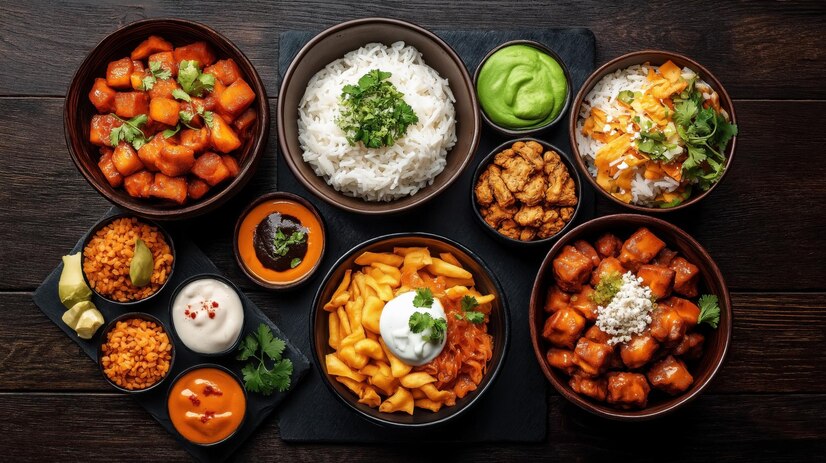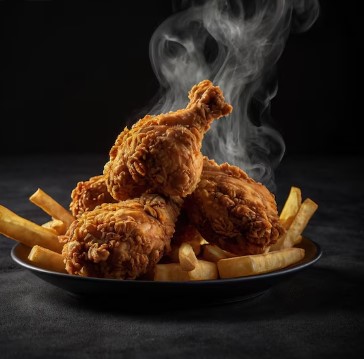Chickpeas, known as “çeciir” in some interpretations of Turkish cuisine, have a fascinating history and offer endless possibilities in the kitchen. Whether you’re a seasoned cook or just starting, chickpeas bring a delightful combination of flavor, texture, and nutrition to a wide variety of dishes. In this journey of Çeciir Delights, we will dive into the culinary magic of chickpeas, from their Turkish roots to their global presence in modern kitchens. Ready to uncover the wonders of this humble legume? Let’s get started!
The History of Ceciir
The chickpea, or Cicer arietinum, is one of the oldest cultivated legumes, with a history dating back over 7,000 years. Originating in the Middle East, chickpeas spread across Europe, Asia, and North Africa, becoming a dietary staple in various regions.
Ancient Origins of the Chickpea: Chickpeas were originally cultivated in the Fertile Crescent, an area known for the birth of agriculture. The nutritious properties of chickpeas made them a crucial crop for early civilizations. Over time, they migrated to Mediterranean regions, especially Turkey, where they have become an integral part of the local diet.
How Chickpeas Became a Staple in Turkish Cuisine: In Turkey, chickpeas are referred to as “nohut,” and they’ve been a cornerstone of the cuisine for centuries. The Ottoman Empire helped spread chickpeas throughout its territories, cementing their place in dishes ranging from soups and stews to snacks and side dishes.
Chickpeas (Çeciir) in Turkish Cuisine
Turkish cuisine is rich in flavors and textures, with chickpeas playing a vital role in traditional and contemporary dishes.
1. The Role of Çeciir in Traditional Turkish Dishes
Chickpeas are found in a variety of Turkish meals, from hearty stews to refreshing salads. Their ability to absorb flavors and complement other ingredients makes them versatile and essential in Turkish cooking.
2. Popular Turkish Chickpea Recipes
Some standout dishes include:
- Nohutlu Pilav – a savory rice dish topped with tender chickpeas.
- Nohut Çorbası – a creamy chickpea soup, perfect for cold days.
- Hummus – while hummus is widely associated with the Middle East, Turkey’s version often includes regional spices and garnishes like sumac and paprika.
The Nutrition of Chickpeas
One of the reasons chickpeas have endured in cuisines for millennia is their incredible nutritional value.
Why Chickpeas Are So Nutritious
Chickpeas are packed with plant-based protein, fiber, vitamins, and minerals. They are an excellent source of iron, folate, and magnesium, making them a valuable ingredient for both vegans and omnivores alike.
Health Benefits of Incorporating Chickpeas into Your Diet
Eating chickpeas regularly can improve digestion, regulate blood sugar levels, and support heart health. Their high fiber content promotes satiety, making them a great food for weight management.
Global Adaptations of Chickpea Dishes
Chickpeas aren’t just a Turkish treasure—they’ve found a home in the kitchens of many countries worldwide.
1. Middle Eastern and Mediterranean Uses of Chickpeas
The Middle East gave us dishes like falafel and hummus, which have gained international fame. Mediterranean diets, known for their heart-healthy benefits, also heavily incorporate chickpeas, particularly in salads and spreads.
2. Indian Chickpea Creations: Curries and Snacks
India’s love affair with chickpeas is evident in dishes like chana masala, a spicy chickpea curry, and besan (chickpea flour), which is used in many snacks and sweets.
3. Chickpeas in Modern Western Cuisine
In recent years, chickpeas have made their way into Western kitchens in the form of innovative dishes like chickpea burgers, chickpea pasta, and even roasted chickpea snacks.
Cultural Significance of Chickpeas
Beyond their culinary uses, chickpeas hold cultural and symbolic significance in various societies.
The Symbolism of Chickpeas in Turkish Culture: In Turkey, chickpeas are often seen as a food of comfort and tradition. During certain religious events and celebrations, chickpea dishes are served as a symbol of abundance and prosperity.
Celebratory Chickpea Dishes in Global Traditions: In many cultures, chickpeas feature prominently in festivals and celebrations. For example, in parts of India, chickpeas are offered during religious ceremonies as a token of good fortune.
How to Cook Çeciir at Home
Chickpeas are easy to cook and can be prepared in various ways, depending on your dish.
Prepping and Cooking Dried Chickpeas: Dried chickpeas need to be soaked overnight and then simmered for 1-2 hours until tender. The soaking process reduces cooking time and improves digestibility.
Tips for Cooking Canned Chickpeas: Canned chickpeas are a convenient alternative. Simply drain and rinse them to reduce the sodium content before using them in your recipes.
Classic Çeciir Recipes from Turkey
Ready to bring Turkish flavors into your kitchen? Here are two beloved recipes.
How to Make “Nohut” – The Turkish Chickpea Stew
Ingredients:
- 2 cups of cooked chickpeas
- 1 onion, finely chopped
- 2 tomatoes, diced
- Olive oil, salt, and pepper
Instructions:
- Sauté the onion in olive oil until translucent.
- Add tomatoes and cook until softened.
- Stir in the chickpeas and let simmer for 15 minutes.
- Season with salt and pepper and serve with rice.
Crafting the Perfect Hummus: A Turkish Twist
Ingredients:
- 1 can of chickpeas
- 2 tbsp tahini
- 2 cloves garlic
- Lemon juice, olive oil, salt, and paprika
Instructions:
- Blend chickpeas, tahini, garlic, and lemon juice until smooth.
- Slowly add olive oil until desired consistency.
- Garnish with paprika and a drizzle of olive oil.
Chickpea-Based Street Foods
Turkish “Leblebi” – Roasted Chickpeas
Leblebi, or roasted chickpeas, are a crunchy, salty snack sold by street vendors across Turkey. These roasted delights are a favorite among locals, often enjoyed with a cup of tea.
Falafel: The Chickpea Street Food Loved Worldwide
Though falafel is rooted in the Middle East, it has become a global street food sensation. These deep-fried chickpea patties are flavorful, crispy, and perfect when served in pita bread with fresh veggies and tahini sauce.
Chickpeas as a Versatile Ingredient
Chickpeas can be used in an astonishing variety of dishes, from soups to flour-based baking.
Using Chickpeas in Soups, Stews, and Salads
Chickpeas add a creamy texture to soups and stews while providing bulk and protein to salads, making them ideal for both light meals and hearty dishes.
Chickpea Flour: A Gluten-Free Wonder
Chickpea flour, also known as besan or gram flour, is a popular gluten-free substitute used in baking and cooking. It’s perfect for pancakes, fritters, and even as a thickener for sauces.
Vegan and Vegetarian Chickpea Recipes
For those looking to adopt a plant-based diet, chickpeas are a perfect ingredient.
Creating Meat-Free Dishes with Chickpeas
Chickpeas can be transformed into burgers, meatballs, and even vegan meatloaf, offering a satisfying alternative to traditional meat-based dishes.
Chickpeas in Plant-Based Diets
Packed with protein and essential nutrients, chickpeas are a favorite in vegan and vegetarian diets, often used as a meat substitute in everything from stews to sandwiches.
Chickpeas in Desserts
While it may sound surprising, chickpeas can also be used in desserts!
Surprising Sweet Treats: Chickpeas in Turkish Sweets
In Turkey, chickpeas are sometimes used in sweet dishes like tahinli nohut, where they are mixed with tahini and sugar to create a nutty, sweet dessert.
Global Chickpea Dessert Ideas
Chickpea-based cookies, blondies, and even ice cream have become popular in the health-conscious baking world, providing a protein-rich twist to traditional sweets.
Chickpea Recipe for Beginners
Simple Chickpea Salad with a Turkish Twist
Ingredients:
- 1 can chickpeas
- 1 cucumber, chopped
- 1 tomato, chopped
- Olive oil, lemon juice, and salt
Instructions:
- Combine chickpeas, cucumber, and tomato in a bowl.
- Drizzle with olive oil and lemon juice.
- Season with salt and serve chilled.
Easy Chickpea Snacks for Kids and Adults
Roasted chickpeas are a healthy, crunchy snack that’s easy to prepare. Toss them in olive oil and your favorite spices, roast them in the oven, and enjoy!
Conclusion
The culinary magic of chickpeas, or çeciir, transcends borders and flavors. Whether enjoyed in a traditional Turkish stew, a Middle Eastern hummus, or a modern chickpea burger, this legume continues to charm chefs and home cooks alike. Its versatility, nutrition, and cultural significance make it a staple ingredient that will continue to thrive in kitchens around the world. Why not explore the endless possibilities of chickpeas and discover your own Çeciir Delights?
FAQs
- What does “çeciir” mean in Turkish?
“Çeciir” refers to chickpeas in some interpretations of Turkish cuisine, though it is often referred to as “nohut.” - Are chickpeas healthy?
Yes! Chickpeas are rich in protein, fiber, vitamins, and minerals, making them an excellent addition to a balanced diet. - Can chickpeas be used in desserts?
Absolutely. Chickpeas can be transformed into sweet treats like cookies, blondies, and even used in traditional Turkish desserts. - How are chickpeas cooked traditionally in Turkish cuisine?
Chickpeas are typically soaked overnight, boiled, and then used in stews, soups, or pureed into dips like hummus. - Why are chickpeas a sustainable food option?
Chickpeas require less water than other crops and help enrich the soil, making them an environmentally friendly choice for sustainable farming.














